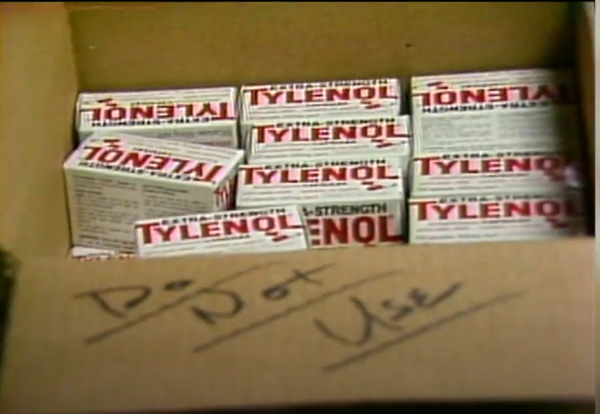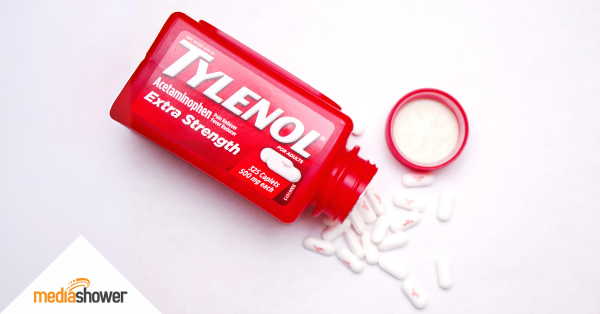
In the fall of 1982, a quiet Chicago suburb became the epicenter of a national emergency. Over the course of just a few days, seven people died after taking Extra-Strength Tylenol capsules that had been laced with cyanide.
The victims included a 12-year-old girl, a young flight attendant, and several members of the same family. The randomness of the attacks and the everyday nature of the product made the event especially terrifying.
The capsules had been purchased at local drugstores and supermarkets, and investigators soon determined that the tampering had occurred after the product had reached retail shelves.
This meant the contamination could not be traced to a single manufacturing facility, adding uncertainty to the investigation.
Tylenol was one of the most trusted household names in the United States, controlling more than 35% of the over-the-counter pain relief market.
Its sudden association with death was more than a brand problem—it was a nationwide public health crisis. Customers who had been loyal for years were now afraid to open a bottle already sitting in their medicine cabinets.
A Corporate Credo Put to the Test
For Johnson & Johnson, the challenge was unlike anything it had faced in its history. The loss of consumer trust threatened years of brand-building, and the stakes were life and death.
From the outset, Johnson & Johnson anchored its decisions in its corporate Credo—a mission statement that placed the well-being of customers, employees, and communities above shareholder returns.
This document became the decision-making framework for the crisis. CEO James Burke emphasized internally that protecting consumers had to be the company’s top priority, regardless of the cost.
A 1983 survey conducted by Roper Organization found that 90% of the public had heard about the Tylenol incident, making it one of the most widely publicized crises of its time.
In that environment, every action—or inaction—would be judged in real time.
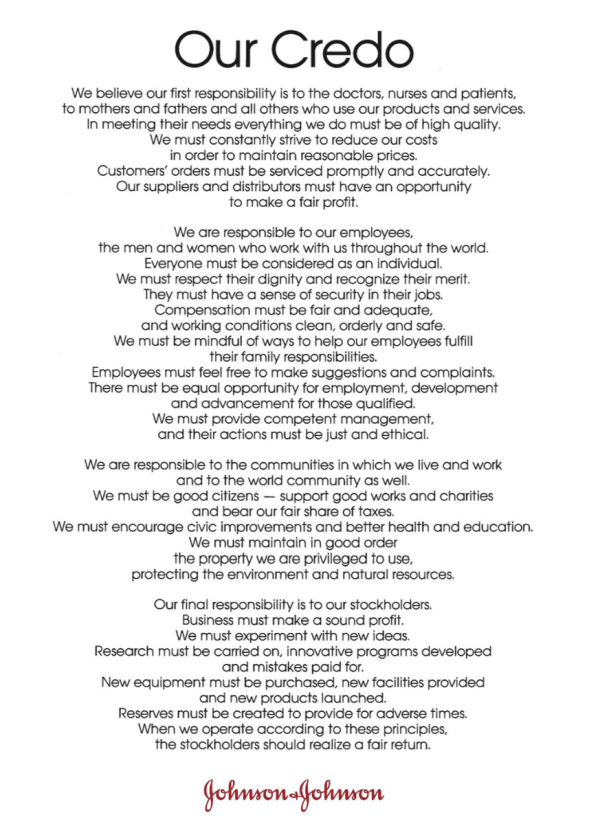
Source: LinkedIn
Swift, Decisive, and Transparent Action
Nationwide warnings
Within hours of confirming the connection between the deaths and Tylenol, Johnson & Johnson used every available media channel to advise the public not to consume any Tylenol products.
They bought national ad space, alerted television networks, and issued warnings to retailers. Importantly, they spoke in plain language that ordinary consumers could understand, avoiding overly technical explanations.
The historic recall
The company went further than most expected, announcing a recall of 31 million bottles of Tylenol capsules from shelves across the country—every single unit in circulation. The retail value of the recall was estimated at more than $100 million, making it the largest in U.S. history at the time.
This recall was voluntary. The Food and Drug Administration had not yet ordered such a sweeping action, but Johnson & Johnson chose to act preemptively. They also offered full refunds or exchanges for anyone who had purchased Tylenol. This gave consumers a direct, positive experience with the company during a time of fear and uncertainty.
Proactive communication
Daily press briefings became a core part of the strategy. Johnson & Johnson executives met with reporters to share updates on the investigation, answer questions, and correct misinformation.
Rather than waiting for journalists to chase them, the company made itself available. This helped them control the flow of information and reduced the risk of rumors overtaking facts.
The tone of their communication was consistent: empathetic, accountable, and focused on public safety. This steadiness in messaging became one of the most cited reasons for the eventual restoration of consumer trust.
“We pulled all the product off the shelves simply because it was the right thing to do.” – Alan Hillburg, leader of the J&J crisis response team
Care beyond the crisis
Beyond the recall and the overhaul of product packaging, Johnson & Johnson extended its response to the human cost of the tragedy. The company offered counseling services and financial assistance to the families of the victims, ensuring they had support during an unimaginably difficult time.
These gestures went far beyond any legal obligation. They reinforced the company’s values in action—showing that its commitment to customers included caring for their well-being in the most personal sense.
“A Trusted Pill Turned Deadly: How Tylenol Made a Comeback”
Turning a Crisis Into an Industry Standard
Johnson & Johnson understood that restoring trust meant more than telling people the product was safe. They needed to make it visibly and provably safe.
In the months following the crisis, the company developed and introduced tamper-evident packaging for Tylenol. This new design featured three distinct layers of protection: a glued box, a plastic seal around the bottle’s neck, and a foil seal under the cap.
Consumers could now see immediately whether a package had been opened or altered.
This innovation quickly became the benchmark for the industry. The FDA later mandated tamper-evident packaging for all over-the-counter medicines, turning Johnson & Johnson’s response into a permanent safety upgrade for the entire market.
By solving a problem that affected the whole industry, the company not only rehabilitated Tylenol’s image but also positioned itself as a leader in consumer protection.
“Packing now had become a competitive advantage. Everything from food products to pharmaceuticals was favorably affected.” – Alan Hillburg
Market share recovery was swift. Within a year, Tylenol regained more than 30% of the pain reliever market, demonstrating that decisive crisis management could restore—and even strengthen—consumer trust.
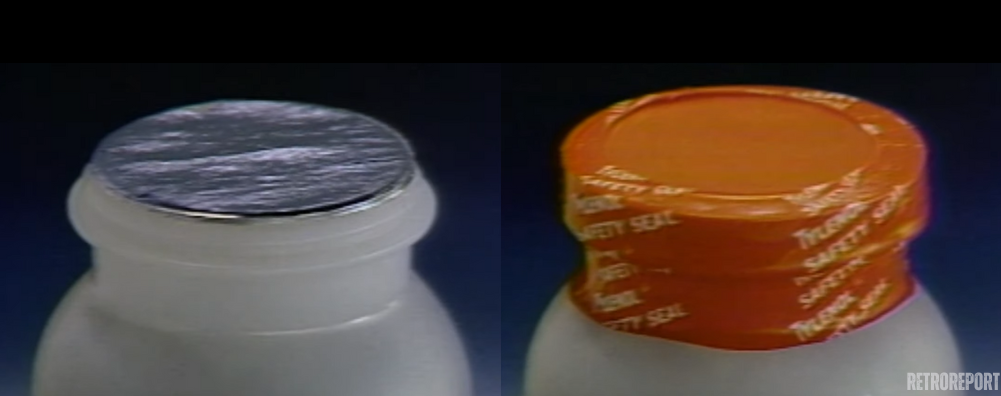
Aftermath and Mystery
While Johnson & Johnson’s crisis response became a textbook case for marketers, the criminal investigation ended without closure. The FBI pursued hundreds of leads. In 1983, James W. Lewis was convicted of extortion for sending a letter to the company demanding $1 million to “stop the killings.”
“Since the cyanide is inside the gelatin, it is easy to get buyers to swallow the bitter pill. . . . So far, I have spent less than $50 and it takes me less than 10 minutes per bottle.” – James Lewis
However, no one was ever charged with the actual murders, and the case remains officially unsolved—adding a layer of enduring mystery to one of America’s most infamous product-tampering crimes.
Why This Case Still Matters
Four decades later, the Tylenol incident remains a touchstone in crisis communication because the fundamentals still apply. When a crisis strikes, brands that put people first, communicate openly, and act decisively are far more likely to recover.
Reputation is not preserved by avoiding problems—it’s built by handling them well. Johnson & Johnson’s response to the Tylenol crisis showed that ethical decision-making and smart brand strategy can coexist, and that doing the right thing can also be the most effective long-term business move.
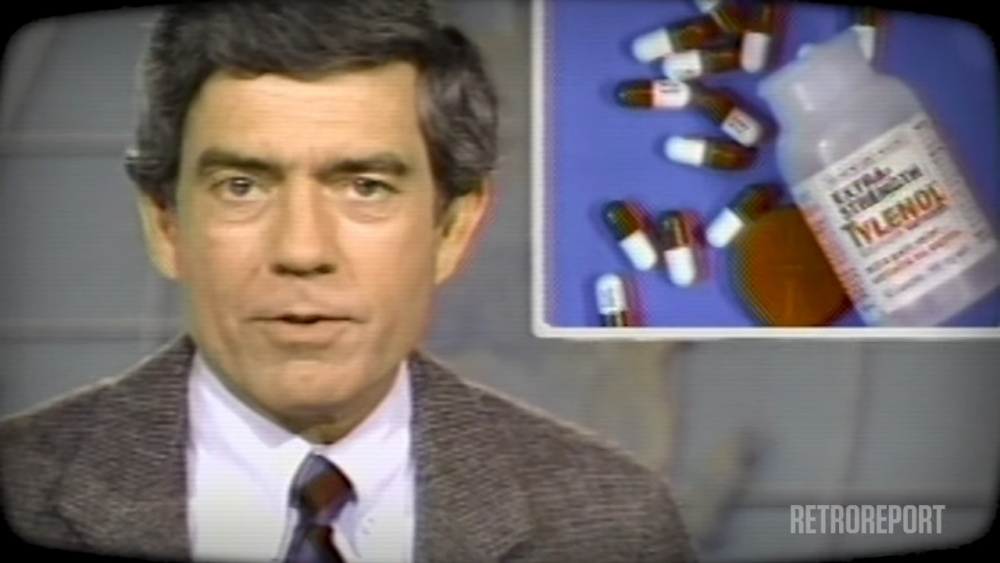
Marketer Takeaways
- Act with urgency. Move faster than the news cycle to establish your brand as the primary, credible source of information.
- Be the one to break bad news. Controlling the narrative prevents speculation and demonstrates accountability.
- Center the conversation on people, not profit. Lead with empathy to preserve trust and goodwill.
- Collaborate with trusted third parties. Partnerships with regulators, law enforcement, or industry bodies boost credibility.
- Turn a crisis into an opportunity to lead. Use the moment to innovate, improve safety, and set new standards in your industry.
Media Shower’s AI marketing platform helps brands turn crisis into credibility. Click here for a free trial.
